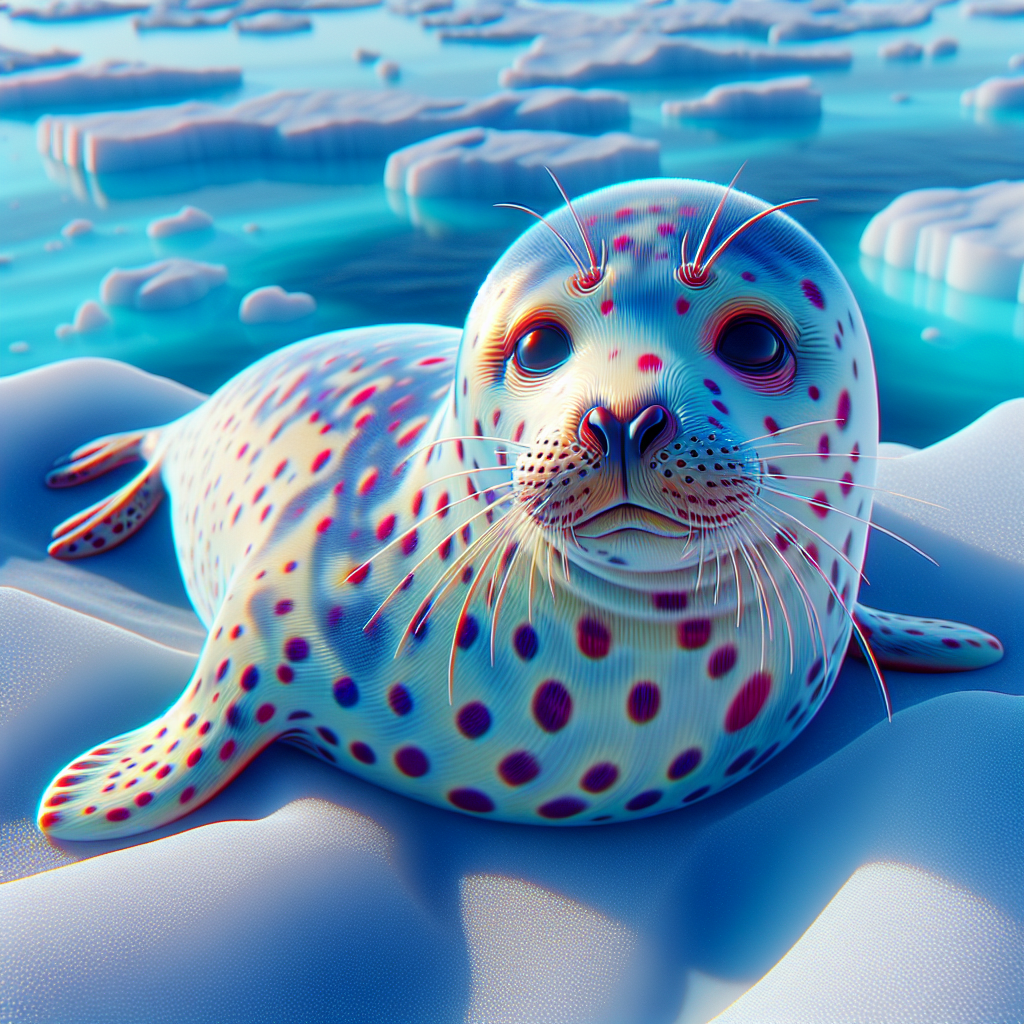The Spotted Seal: Nature's Adorable Arctic Acrobat
Imagine a creature that combines the cuteness of a puppy with the agility of a dolphin, and you have the spotted seal. These charming marine mammals, known scientifically as Phoca largha, are found in the icy waters of the North Pacific Ocean, particularly around the coasts of Alaska, Russia, and Japan. Spotted seals are fascinating not only for their playful nature but also for their adaptability to the harsh Arctic environment. They are most active during the breeding season, which occurs from late winter to early spring, when they gather on the ice to give birth and raise their pups. The spotted seal's unique lifestyle and habitat make it a subject of interest for both scientists and wildlife enthusiasts.
Spotted seals are medium-sized pinnipeds, with adults typically weighing between 180 to 240 pounds and measuring about 5 to 6 feet in length. Their name comes from the distinctive dark spots scattered across their light gray or silver fur, which provides excellent camouflage against the ice and snow. These seals are well-adapted to their cold environment, with a thick layer of blubber that insulates them from freezing temperatures and provides energy reserves during times when food is scarce.
The diet of spotted seals primarily consists of fish, crustaceans, and cephalopods, which they hunt with remarkable skill. They are known for their ability to dive deep and hold their breath for extended periods, allowing them to pursue prey in the frigid depths of the ocean. This diet is crucial for their survival, especially during the breeding season when energy demands are high.
The breeding habits of spotted seals are particularly interesting. Females give birth to a single pup on the ice, and the mother-pup bond is strong. The mother nurses her pup for about a month, during which time the pup rapidly gains weight, thanks to the rich, fatty milk. This period is critical for the pup's development, as it must quickly learn to fend for itself in the challenging Arctic environment.
Despite their adaptability, spotted seals face numerous threats. Climate change is perhaps the most significant, as it leads to the melting of sea ice, which is essential for their breeding and resting. As the ice diminishes, spotted seals are forced to travel further to find suitable habitats, which can lead to increased energy expenditure and reduced access to food. Additionally, human activities such as shipping, oil exploration, and fishing can disrupt their environment and pose direct threats to their survival.
Conservation efforts are underway to protect spotted seals and their habitat. International agreements and regulations aim to mitigate the impact of human activities on these animals. However, addressing climate change remains a complex and urgent challenge that requires global cooperation and commitment.
While some may argue that economic development and resource extraction are necessary for human progress, it's crucial to balance these needs with the preservation of our planet's biodiversity. The plight of the spotted seal serves as a reminder of the interconnectedness of all life on Earth and the responsibility we have to protect it.
Spotted seals are more than just adorable creatures; they are vital components of the Arctic ecosystem. Their presence indicates the health of their environment, and their survival is intertwined with the broader challenges facing our planet. By understanding and addressing the threats they face, we can work towards a future where both humans and wildlife can thrive.

